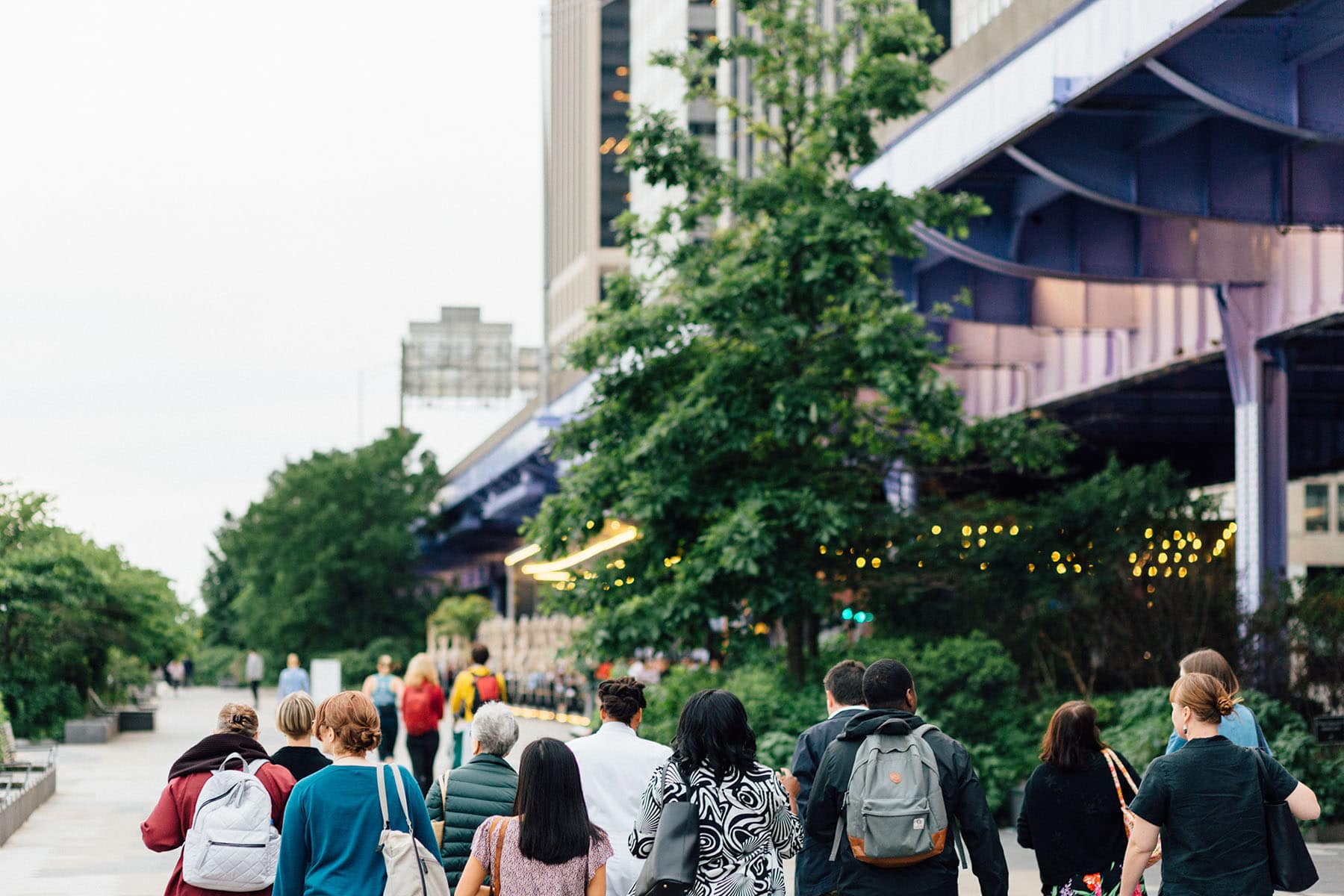
Meet the Artist: Kamau Ware of Black Gotham Experience
It’s not hard to find stories from the past in New York City but, as artist and educator Kamau Ware discovered, there are huge gaps in the city’s history—especially when it comes to Manhattan’s first black communities. While leading a tour at the city’s Tenement Museum, Ware was posed with a question he couldn’t answer: “Where were the black people?”
It was a turning point for the self-confessed history nerd and photographer, who went on to create Black Gotham Experience, an immersive visual storytelling project that celebrates the impact of the African Diaspora on New York City. Through walking tours, events and art including graphic novels and a mural at Pier 17, Black Gotham Experience shines a light on the untold stories of the city’s first black communities, starting in 1643 when New York was still New Amsterdam.
Ware’s passion for emotive storytelling also fuels his regular “Nerdy Thursday” events, which bring people together for panels, talks, games and cocktails at Black Gotham Experience’s studio in the Seaport District—a space on Front Street, made possible by an artist residency with Lower Manhattan Cultural Council and support from The Howard Hughes Corporation.
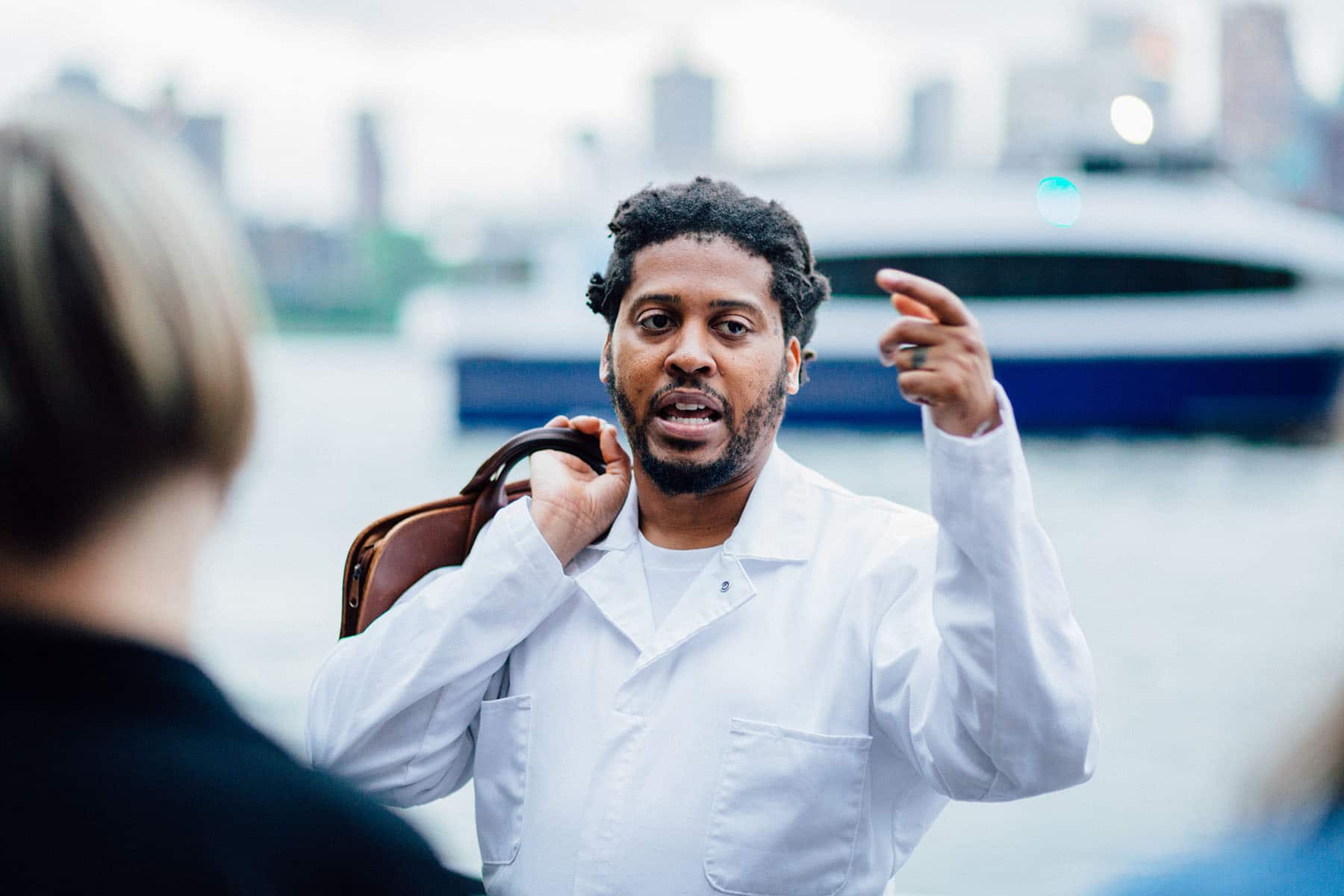
You explain on your website that Black Gotham Experience “all started with a question.” How did that question the little girl asked you affect you?
Certain things happen to you that you can’t quite fix without doing something active and productive. I didn’t mention any black history the entire 90 minutes and when she was like, “Where were the black people?” it hollowed me out. I thought: I’m not going to be in a situation like this again. So, I began to talk more about black history regardless of what tour I gave inside the Tenement Museum building. But I’ll never forget that feeling. I want to get to a point where there’s fewer and fewer opportunities for a black child in New York City to have to ask that question.
Why did you think a walking tour was the best vehicle?
It’s about using your emotions as technology—as an X-ray to say, “how would I feel in this situation?” Your emotions become a tool for creating the HD experience. I’m not pointing to a building and saying, “a black person used to live there.” A black person built the street before the building was there. But I can’t name the movie—or the play or the TV show [of these stories]. All I have is your heart. So I have to use that to make the picture.
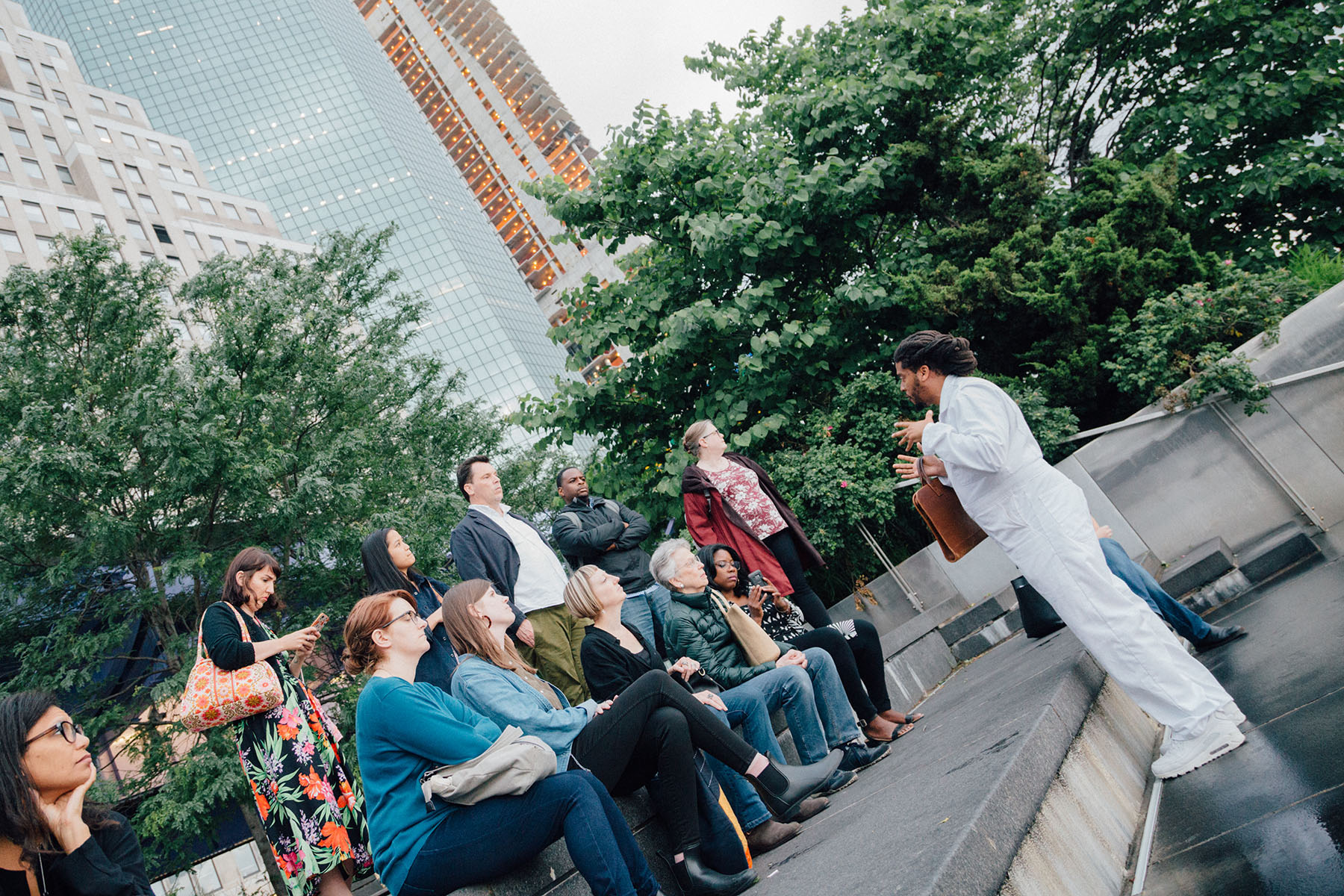
It was scary to hear some of the history on the Sarah’s Fire tour and realize I hadn’t heard most of it before.
Brilliant people don’t know. In 2010 when I did the first walking tour, to tell somebody that New York City is founded on slavery sounded like a punchline. It doesn’t sound real. The most common retort was, “Slavery wasn’t up here. People were free in the north.” But New York was divided. You had abolitionists and people invested in slavery and living and working in the same environment.
How did you uncover all the amazing details in the stories you tell on the tours?
I started with books. And then I listened to lectures and looked at where people who wrote the books were getting their information from. What you discover is that a lot of this information does exist, but you have to piece it together, like it’s a quilt. Spain, Portugal, the Netherlands, France, England have all been participants and designers of different iterations of the slave trade. It’s like a form of historic surgery to find and put those pieces together.
A lot of people think of history and think, “we were great explorers” or “we fought this war” or “we had a revolution” and “this is what King Louis did.” But in the background of all those celebrated, well documented and reinterpreted stories of history, there are black people. There are bodies traversing the ocean, from this coast and that coast, and they’re ending up here. If you take all those stories, and connect the dots, you get the greatest story never told.
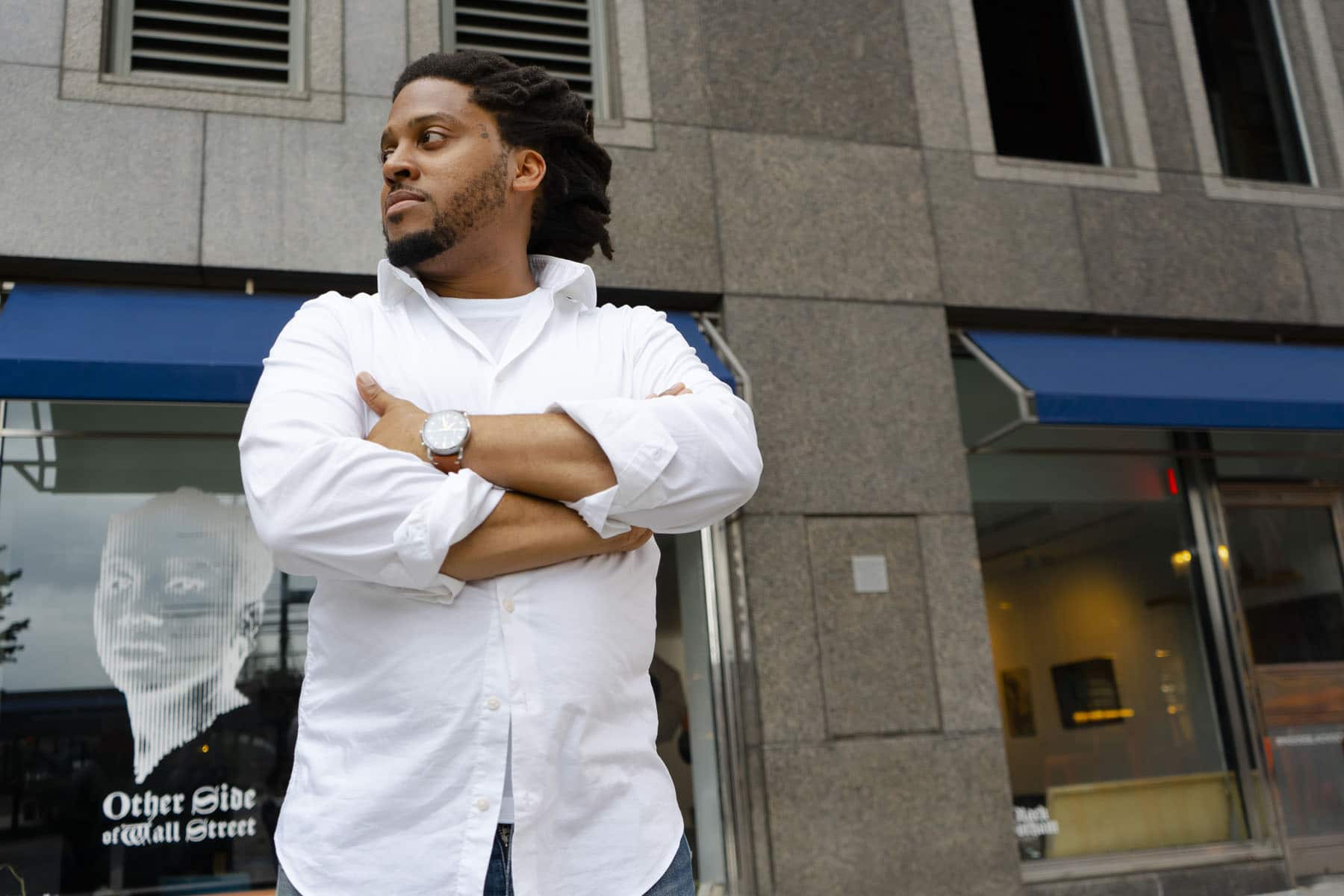
Were you a history nerd as a kid?
Yeah, very much. I have a mild form of synesthesia where, when I read history, I see movies in my head—the action. I’ve always loved books and being in libraries, and nonfiction was more interesting to me than fiction because the consequences of what actually happened are more real in the world. In college I did an interdisciplinary studies major; I pitched an idea to combine three areas: US history, world culture and child development.
How did your Nerdy Thursday events come about?
This is how we bring the history in. On our tours, we talk about people holding court and holding space tons of years ago. This is the contemporary version of black people holding space—celebrating the nerdiness that makes you understand and appreciate history—and also a welcoming space where somebody who doesn’t have to be Jamaican or from Pittsburgh to walk into the room and be like, ‘What’s going on?’ It’s always been an open space. That said, it’s actually gotten blacker in the past year.
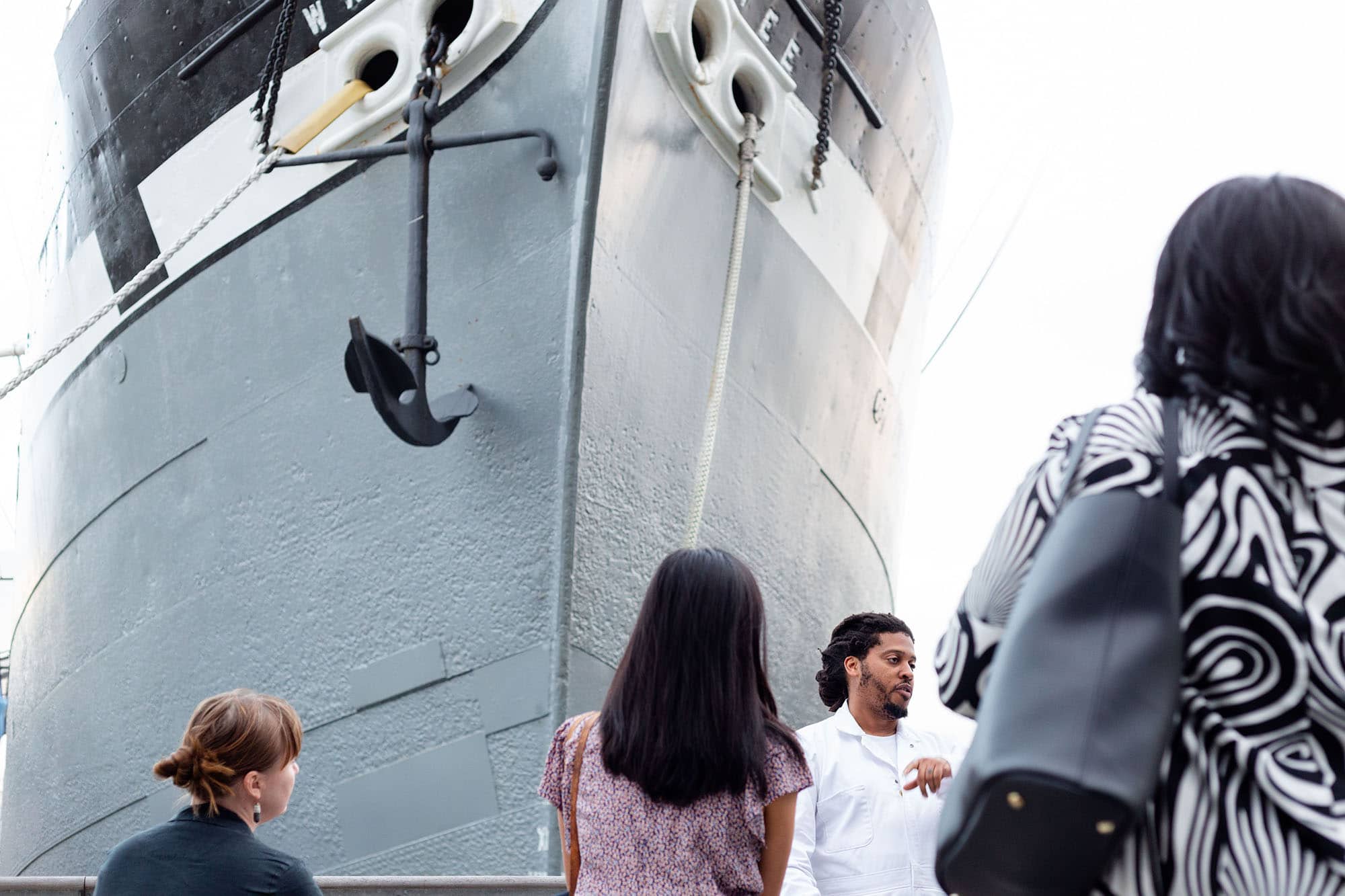
How so?
People expressed that they needed a space that was more targeted toward black stories. We also began to see how much black people who are entrepreneurial don’t have a consistent space where they can come to talk about being conscious and progressive, but also where they can be comfortable admitting they want to build a business and make money. Having the space gives us the opportunity to have conversations that need to be had. I think it’s important that people listen, read, disagree, have commentary—but move your understanding forward and not necessarily have everybody agree with you. To have these exchanges that push the culture forward. The culture is the goal.
What’s next for Black Gotham Experience?
We want to elevate the experience. If you take the Sarah’s Fire walking tour, imagine if that was also a graphic novel and eventually part of a TV series. That’s something we’re developing from a business plan standpoint. We want to be able to put together a production company to create these different forms of media. It’s like the Harry Potter approach: Let’s build a bigger boat and take into account the trajectory we want to take. I’ve learned the power of having a plan. And the Nerdy Thursday concept is growing. The real success story for me is that the idea and the culture of it is spreading beyond the number of people we can fit in one room. We’ve done one at South by Southwest twice, one in Paris. We’re producing our second Nerdy Thursday at the New-York Historical Society on August 8th, and our first one at the African American Museum in Philadelphia on October 24th.
How do you balance your nerdy research and writing side with the more social aspects of Black Gotham?
I have structure, my routines. I meditate, get my espresso in. I’m working on getting exercise back into my routine. I try to eat healthy, laugh a lot, and I’m always pushing my development intellectually and creatively. The neighborhood and the city is really my studio in a sense. There’s so much about the city that triggers my thoughts into motion.
The Black Gotham Experience Studio is located at 192 Front Street, between John and Fulton Streets, and is open Thursdays–Saturdays from 12pm–7pm.
Click here to book tickets for Black Gotham Experience walking tours and see the upcoming Nerdy Thursday schedule here.
PHOTO CREDITS:Portraits: Ashley Ferrara.
Tour photos: Matthew Sherman
